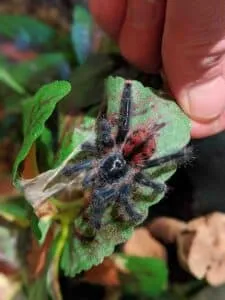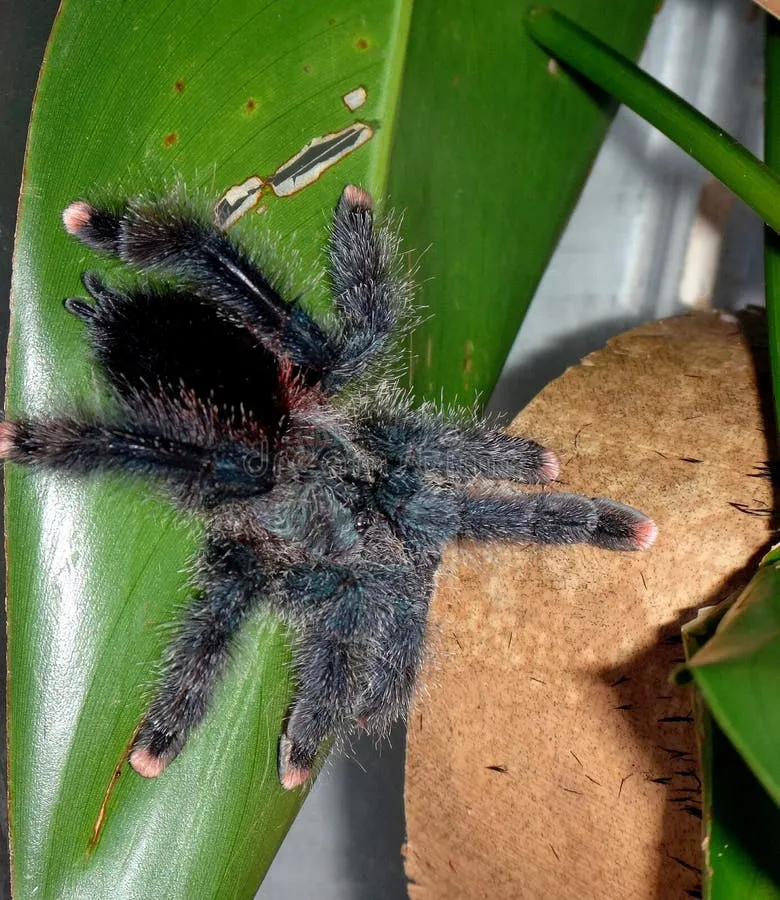Pink Toe Tarantula Venom Top 5 Facts
The Pink Toe Tarantula, a captivating arboreal species, is a favorite among tarantula enthusiasts. Beyond its striking appearance, with its namesake pink toe pads, lies a fascinating world of biology, particularly its venom. This article delves into the top 5 facts about Pink Toe Tarantula venom, exploring its composition, effects, and significance. Understanding this aspect of these arachnids can help with responsible pet ownership and deepen appreciation for the natural world. This guide provides valuable insights into the less-known aspects of this species.
Fact 1 What is Pink Toe Tarantula Venom
Pink Toe Tarantula venom is a complex mixture of proteins, enzymes, and peptides produced within specialized glands in the chelicerae (fangs) of the tarantula. This venom serves several critical functions for the spider’s survival. It is primarily used for subduing prey, aiding in the initial paralysis and subsequent breakdown of tissues, making it easier for the tarantula to consume its meal. The venom’s composition varies depending on the tarantula’s age, diet, and environmental factors, adding to the complexity of its study. Understanding the components of the venom is crucial for both medical research and comprehending the spider’s predatory behavior.
Composition of the Venom

The composition of Pink Toe Tarantula venom is a cocktail of bioactive compounds. These include various enzymes, such as hyaluronidase, which helps to spread the venom by breaking down tissues. Neurotoxins, which are key to paralyzing prey, are also present. Other components include proteases, which aid in breaking down proteins, and peptides that might have different functions. The exact proportions of these components can differ among individual tarantulas and even vary over time within the same spider. This intricate composition underscores the venom’s effectiveness as a hunting and defensive tool. The study of venom composition provides valuable insights into evolutionary biology and the development of natural compounds.
Purpose of the Venom
The primary purpose of Pink Toe Tarantula venom is prey capture and self-defense. When a tarantula bites its prey, the venom is injected, quickly immobilizing the victim. The venom’s neurotoxins specifically target the nervous systems of insects and other small animals, causing paralysis. Furthermore, the venom contains enzymes that initiate the breakdown of the prey’s tissues, pre-digesting the meal, making it easier for the spider to consume. The venom also acts as a deterrent against potential predators. The complex purpose underscores the venom’s importance for the tarantula’s survival in its natural habitat, providing them with an effective way of securing nourishment and safeguarding themselves against harm.
Fact 2 The Effects of Pink Toe Tarantula Venom
The effects of Pink Toe Tarantula venom on humans are generally mild, although individual reactions can vary. Bites from these tarantulas are not usually life-threatening, but can be quite unpleasant. The level of reaction to the bite depends on several factors. These can include the amount of venom injected, the individual’s sensitivity, and the location of the bite. Symptoms are often localized but can sometimes cause more systemic issues. Understanding the range of possible symptoms is crucial for anyone handling or working with these spiders. Seeking prompt medical attention is recommended, especially if symptoms become severe or persist.
Minor Symptoms

Minor symptoms associated with Pink Toe Tarantula bites typically include localized pain, redness, and swelling at the bite site. Itching is a common symptom, as is mild muscle cramping. These symptoms usually resolve within a few hours to a day or two. Some individuals may experience a slight burning sensation. The minor symptoms are due to the localized inflammatory response initiated by the venom. The severity of minor symptoms can vary slightly. Proper wound care, like cleaning the area with soap and water, helps minimize discomfort and potential complications.
Serious Symptoms
Serious symptoms from a Pink Toe Tarantula bite are rare. However, some individuals may experience more pronounced effects. These can include significant swelling, intense pain spreading from the bite site, and muscle cramps. In rare cases, there might be nausea, vomiting, or dizziness. Systemic symptoms are unusual but can occur, especially in those with sensitivities or allergies to spider venom. Medical attention should be sought immediately if severe symptoms manifest. While the venom of these tarantulas is not considered highly toxic to humans, these rare symptoms underline the importance of caution and prompt medical care.
Fact 3 Is Pink Toe Tarantula Venom Dangerous to Humans
Generally, Pink Toe Tarantula venom is not considered highly dangerous to humans. The venom is less potent than that of some other tarantula species. Bites typically result in mild to moderate symptoms, and serious complications are rare. The overall danger depends on several factors, including the individual’s health and the amount of venom injected. Despite its relatively low toxicity, it is still important to exercise caution when handling these spiders. Understanding the potential risks, along with the proper care, helps to ensure safety for both the handler and the spider.
Severity Factors

Several factors can influence the severity of a Pink Toe Tarantula bite. The amount of venom injected is a crucial determinant; a larger dose may result in more pronounced symptoms. The individual’s health status also plays a role; those with allergies or underlying health conditions might experience more severe reactions. The location of the bite can also affect the severity; bites near sensitive areas or those that cause a rapid inflammatory response can be more problematic. Knowing these factors and their potential impact will assist you in the understanding of the risks involved with these creatures.
First Aid
Immediate first aid for a Pink Toe Tarantula bite includes washing the affected area with soap and water to prevent infection. Applying a cold compress can help reduce pain and swelling. It’s important to avoid scratching the bite to prevent infection. Over-the-counter pain relievers can help with discomfort. Keep an eye out for any serious symptoms, like difficulty breathing, or rapid swelling. If significant symptoms develop, seek immediate medical attention. Providing detailed information about the bite and spider can help with effective medical treatment, ensuring rapid management of the symptoms.
Fact 4 Research on Pink Toe Tarantula Venom
Research on Pink Toe Tarantula venom is ongoing, with scientists exploring its potential medical applications and its unique biological properties. Studies aim to identify specific components of the venom and understand their functions. This type of research provides critical information for understanding venom’s interaction with biological systems, and also to develop novel treatments. Understanding the venom’s structure and effects helps in the development of more effective antivenoms and treatments for other conditions. The continued study underscores the importance of these creatures and provides an avenue for scientific advancement.
Medical Applications

The potential medical applications of Pink Toe Tarantula venom are a subject of growing interest. Researchers are investigating how various venom components might be used to develop new pharmaceuticals. Some compounds found in spider venom have shown promise as pain relievers, and anti-inflammatory agents. These studies seek to identify active compounds for developing new medicines that can address pain, inflammation, and other conditions. The distinctive properties of the venom offer avenues for discovering new therapeutic approaches. Further research holds promise for developing innovative medicines and treatments.
Ongoing Studies
Ongoing studies focus on understanding the complex composition of Pink Toe Tarantula venom. Scientists use advanced techniques to analyze the various proteins, peptides, and enzymes found in the venom. Research into the genetic makeup, to identify the genes responsible for producing venom components is an ongoing project. These studies help to reveal the function of the venom’s components and also to investigate how the venom affects biological systems. Further research includes testing these components on cells and animals to explore therapeutic potential. The insights gained from these studies will provide a thorough understanding of the venom.
Fact 5 Interesting Facts about Pink Toe Tarantula Venom
Beyond the scientific aspects, there are several interesting facts about Pink Toe Tarantula venom that highlight its unique features. These facts provide additional insight into these creatures and their venom. Understanding these details can also deepen one’s appreciation of these intriguing creatures. These details can also assist in better understanding the biology of these arachnids.
Venom Delivery

Pink Toe Tarantulas deliver their venom through their chelicerae, which are modified into fangs. The venom is injected into the prey during a bite. The tarantula controls the amount of venom injected, which depends on the size and type of prey. The anatomy of the fangs and the delivery mechanism has been fine-tuned through evolution to ensure successful prey capture. The venom is injected by the tarantula, quickly immobilizing the prey. The effective venom delivery is vital to the survival of these predators.
Evolutionary Significance
The venom of the Pink Toe Tarantula has played an essential role in the tarantula’s evolution. Over millions of years, the venom has evolved to target specific prey and deter predators. The composition of the venom continues to adapt to the tarantula’s needs. The venom’s effectiveness has enabled the tarantula to thrive in its environment. Understanding the evolutionary aspects of the venom offers insights into the broader process of natural selection, showcasing how species adapt and evolve over time. The evolutionary significance of the venom emphasizes its critical role in the tarantula’s survival.
In conclusion, Pink Toe Tarantula venom is a fascinating and complex substance with several key characteristics. While not considered highly dangerous to humans, its components serve vital functions for the tarantula, from prey capture to defense. Ongoing research continues to reveal its potential applications. This article has provided key facts about Pink Toe Tarantula venom, emphasizing its composition, effects, and the importance of responsible handling of these creatures. Understanding the venom deepens the appreciation for these arachnids. Continued study will lead to a greater understanding of the biological world.
